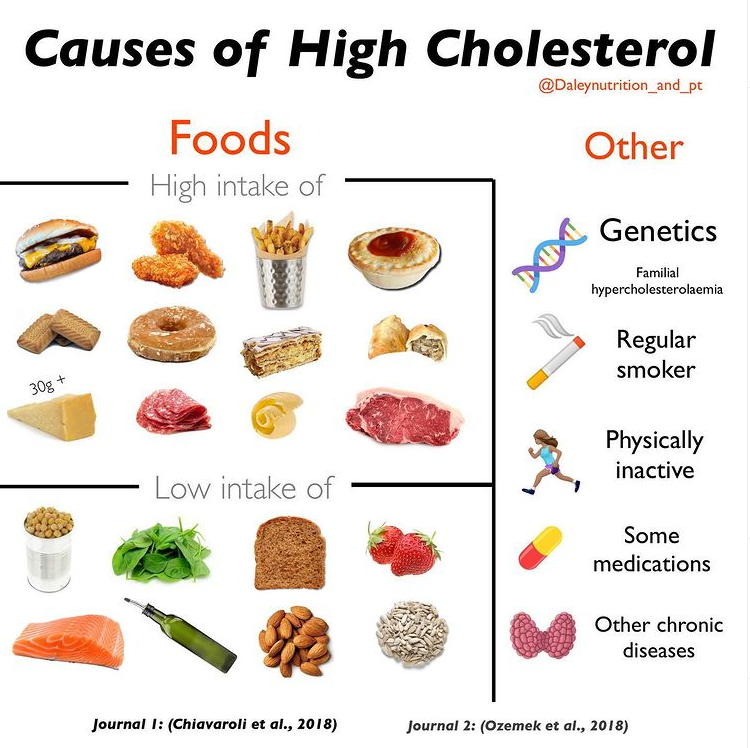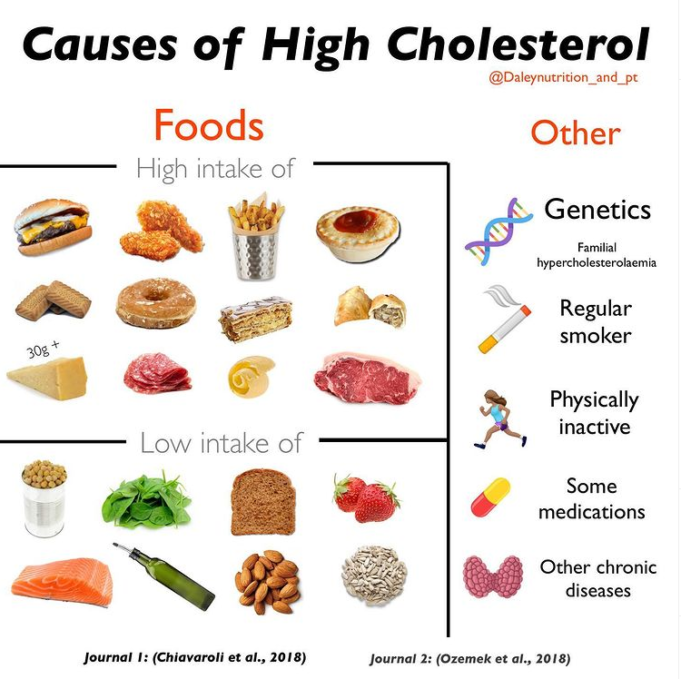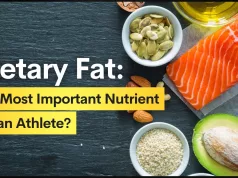What diet for high cholesterol? It’s a question many of us grapple with, especially after that dreaded blood test. Imagine your cholesterol levels as a mischievous band of tiny, lipid-loving gremlins wreaking havoc on your arteries. They’re sneaky, these gremlins, and they can lead to some serious health issues if you don’t keep them in check.
But fear not, there’s a way to tame those cholesterol gremlins – with a delicious and healthy diet! This guide will equip you with the knowledge to fight those lipid-loving gremlins and reclaim your health.
High cholesterol, simply put, is when you have too much of a waxy substance called cholesterol in your blood. This can lead to a buildup of plaque in your arteries, which can increase your risk of heart disease and stroke.
The good news is, there are things you can do to lower your cholesterol levels, and a healthy diet is one of the most important steps.
Understanding High Cholesterol
Cholesterol is a waxy, fat-like substance found in all the cells of your body. It’s essential for building healthy cells, making hormones, and digesting food. But too much cholesterol can build up in your arteries, forming plaque that can block blood flow and increase your risk of heart disease and stroke.
So, you’re trying to lower your cholesterol? Good for you! But remember, it’s not just about what you eat, it’s also about how much you eat. A good way to manage both cholesterol and weight is to follow a diet rich in fruits, vegetables, and whole grains.
And if you’re looking for some more specific guidance, check out this article on the best diet for weight loss. After all, losing weight can be a big step in the right direction for lowering your cholesterol levels too!
Types of Cholesterol and Their Impact on Health, What diet for high cholesterol
Cholesterol is carried in the blood by lipoproteins, which are like tiny buses that transport cholesterol throughout the body. There are two main types of lipoproteins:
- Low-density lipoprotein (LDL), often called “bad” cholesterol, carries cholesterol from the liver to the body’s cells. High levels of LDL cholesterol can lead to plaque buildup in the arteries.
- High-density lipoprotein (HDL), often called “good” cholesterol, picks up cholesterol from the body’s cells and carries it back to the liver for processing. High levels of HDL cholesterol help to remove LDL cholesterol from the arteries and reduce the risk of heart disease.
Risks Associated with High Cholesterol Levels
High cholesterol levels can increase your risk of developing several health problems, including:
- Heart disease: High cholesterol can lead to plaque buildup in the arteries, which can narrow the arteries and restrict blood flow to the heart. This can cause chest pain (angina), heart attack, or stroke.
- Stroke: When plaque breaks away from the artery walls, it can travel to the brain and block blood flow. This can cause a stroke, which can damage brain cells and lead to disability.
- Peripheral artery disease (PAD): High cholesterol can also affect the arteries in the legs and feet, leading to PAD. This can cause pain, numbness, and tingling in the legs and feet, and can even lead to amputation.
Lifestyle Factors that Contribute to High Cholesterol
Several lifestyle factors can contribute to high cholesterol levels, including:
- Diet: A diet high in saturated and trans fats can raise LDL cholesterol levels.
- Lack of exercise: Regular physical activity can help lower LDL cholesterol and raise HDL cholesterol levels.
- Smoking: Smoking damages blood vessels and increases the risk of heart disease and stroke.
- Obesity: Being overweight or obese can increase LDL cholesterol and lower HDL cholesterol levels.
- Genetics: Some people are genetically predisposed to high cholesterol levels.
Dietary Approaches to Lowering Cholesterol
Lowering cholesterol through diet is a vital aspect of managing heart health. It involves making strategic food choices that can significantly impact your cholesterol levels. This section will delve into the key principles of a cholesterol-lowering diet, explore a sample meal plan, and compare the effectiveness of different dietary approaches in managing cholesterol.
Key Principles of a Cholesterol-Lowering Diet
A cholesterol-lowering diet is not about eliminating entire food groups but rather focusing on making smart choices within each category.
- Limit Saturated and Trans Fats:These fats, found in red meat, full-fat dairy, and processed foods, can raise LDL (bad) cholesterol. Aim to consume less than 6% of your daily calories from saturated fat.
- Reduce Cholesterol Intake:Limit foods high in cholesterol, such as organ meats, egg yolks, and shellfish.
- Increase Fiber Intake:Soluble fiber, found in oats, beans, and fruits like apples and pears, can bind to cholesterol in the gut and help remove it from the body.
- Choose Unsaturated Fats:Monounsaturated and polyunsaturated fats, found in olive oil, avocados, nuts, and fatty fish, can lower LDL cholesterol and raise HDL (good) cholesterol.
- Maintain a Healthy Weight:Losing even a small amount of weight can significantly impact cholesterol levels.
Sample Meal Plan
Here is a sample meal plan that incorporates the principles mentioned above: Breakfast:Oatmeal with berries and a sprinkle of walnuts. Lunch:Lentil soup with a whole-wheat roll. Dinner:Grilled salmon with roasted vegetables. Snacks:Apple slices with peanut butter, a handful of almonds.
So, you’re looking for a diet to tame your cholesterol? Well, good news! It’s often about making smart swaps and keeping an eye on those saturated fats. And hey, if you’re also aiming to shed some pounds, check out how to lose weight – it’s like a cheat sheet for a healthier you.
But remember, even with a cholesterol-friendly diet, it’s always a good idea to chat with your doctor before making any major changes.
Comparing Dietary Approaches
Different dietary approaches can be effective in managing cholesterol. Here’s a comparison of three popular ones:
| Diet | Key Features | Cholesterol Management |
|---|---|---|
| Mediterranean Diet | Emphasizes fruits, vegetables, whole grains, legumes, nuts, seeds, olive oil, and fish. Limits red meat and processed foods. | Studies have shown that the Mediterranean diet can significantly lower LDL cholesterol and raise HDL cholesterol. |
| DASH Diet | Focuses on fruits, vegetables, whole grains, low-fat dairy, and lean protein. Limits saturated fat, cholesterol, and sodium. | The DASH diet has been proven effective in lowering blood pressure and can also help reduce LDL cholesterol. |
| Vegetarian Diets | Exclude all animal products, including meat, poultry, fish, eggs, and dairy. | Vegetarian diets are often lower in saturated fat and cholesterol, which can contribute to lower LDL cholesterol levels. |
Foods to Include in a Cholesterol-Lowering Diet
A diet for lowering cholesterol doesn’t have to be a bland, boring experience. In fact, there are plenty of delicious and satisfying foods that can actually help you achieve your cholesterol goals. Think of it as a delicious journey towards a healthier heart!
Soluble Fiber: The Cholesterol-Busting Hero
Soluble fiber is your heart’s best friend, working tirelessly to mop up excess cholesterol in your body and whisk it away before it can cause any trouble. Foods rich in soluble fiber are essential for a cholesterol-lowering diet.
So, you’re trying to lower your cholesterol? Good for you! Just remember, it’s not all about kale and quinoa. Sometimes, you just need a little bubbly, sugar-free treat. Maybe a nice, refreshing diet coke will do the trick?
Just don’t forget, even diet soda is a treat, so keep it in moderation. Now, back to the cholesterol – remember to focus on healthy fats and lean proteins!
- Oats:Start your day with a bowl of oatmeal, a true champion of soluble fiber. You can enjoy it plain, with fruit, or even in overnight oats for a convenient and delicious breakfast.
- Beans:Beans, beans, the magical fruit, are packed with soluble fiber and protein, making them a fantastic addition to any meal. Try them in chili, salads, or even as a hearty vegetarian burger.
- Apples:An apple a day keeps the doctor away, and it also helps lower cholesterol! The pectin in apples is a soluble fiber superstar, so grab an apple for a healthy snack or add it to your salad.
- Avocados:While avocados are high in healthy fats, they also boast a good amount of soluble fiber. Enjoy them on toast, in salads, or even as a creamy dip for veggies.
- Psyllium Husk:This fiber supplement can be added to smoothies, yogurt, or even water for a boost of soluble fiber. It’s a great option if you need a little extra fiber in your diet.
Omega-3 Fatty Acids: Heart-Healthy Heroes
Omega-3 fatty acids are like tiny superheroes for your heart, helping to reduce inflammation, lower triglycerides, and even improve blood pressure.
- Fatty Fish:Salmon, tuna, mackerel, and sardines are excellent sources of omega-3s. Aim for at least two servings of fatty fish per week.
- Flaxseeds:These tiny seeds are a powerhouse of omega-3s, and you can sprinkle them on salads, yogurt, or even bake them into muffins.
- Chia Seeds:Chia seeds are another great source of omega-3s, and they also provide fiber and protein. Add them to smoothies, yogurt, or overnight oats.
- Walnuts:Walnuts are a delicious and convenient source of omega-3s. Enjoy them as a snack, add them to trail mix, or sprinkle them on salads.
Plant-Based Protein: Powering Up Your Plate
Plant-based protein sources are a great way to get your protein fix without loading up on saturated fat.
- Lentils:These tiny legumes are packed with protein and fiber, and they’re incredibly versatile. Enjoy them in soups, stews, salads, or even as a meatless burger.
- Tofu:Tofu is a great source of protein and is very low in saturated fat. It can be used in stir-fries, salads, or even as a substitute for meat in many dishes.
- Tempeh:Tempeh is another fermented soybean product that’s high in protein and fiber. It has a nutty flavor and can be used in stir-fries, salads, or even as a meatless burger.
- Nuts and Seeds:Nuts and seeds are great sources of protein and healthy fats. Almonds, cashews, sunflower seeds, and pumpkin seeds are all excellent choices.
Foods to Limit or Avoid
You’ve learned about the good guys—the foods that help lower your cholesterol. Now, let’s talk about the villains: the foods you should limit or avoid to keep those cholesterol levels in check. Think of it as a “bad guys” list, but instead of supervillains, we’re dealing with foods that can wreak havoc on your heart health.
Foods High in Saturated and Trans Fats
Saturated and trans fats are like the arch-nemesis of good cholesterol. They raise your LDL (bad) cholesterol, increasing your risk of heart disease. Think of them as the villains who team up to cause trouble.
“Saturated fats are typically solid at room temperature and are found in animal products like meat, poultry, and dairy. Trans fats, on the other hand, are created through a process called hydrogenation, which adds hydrogen to liquid oils to make them solid.”
Here’s a table that shows common foods high in saturated and trans fats:
| Food | Serving Size | Saturated Fat (grams) |
|---|---|---|
| Butter | 1 tablespoon | 7 |
| Full-fat cheese | 1 ounce | 5 |
| Beef (ground, regular) | 3 ounces | 8 |
| Fried chicken (skin-on) | 1 piece | 10 |
| Coconut oil | 1 tablespoon | 12 |
| Palm oil | 1 tablespoon | 8 |
| Commercial baked goods (cookies, cakes, pastries) | 1 serving | Variable |
| Processed meats (bacon, sausage, hot dogs) | 1 serving | Variable |
The Role of Sugar and Processed Foods
While sugar itself doesn’t directly raise cholesterol, it’s a sneaky villain that can contribute to high cholesterol indirectly. When you consume too much sugar, your body can convert it into triglycerides, which are a type of fat that can raise your LDL (bad) cholesterol.
Processed foods, which are often loaded with sugar, saturated fats, and trans fats, are like the henchmen of the cholesterol villains. They work together to increase your risk of heart disease.
“Think of it this way: If you eat a lot of processed foods, you’re essentially giving your body a steady stream of villains that can sabotage your heart health.”
Other Lifestyle Modifications
You’ve already made great strides in your quest to lower cholesterol by making changes to your diet. But hold your horses! There’s more to this cholesterol-busting journey than just what you put on your plate. It’s time to dive into the world of lifestyle modifications, where we’ll unlock the secrets to keeping your cholesterol in check.
Regular Physical Activity
Regular physical activity is like a magic potion for your cholesterol levels. It’s not just about hitting the gym, though a good workout is always a plus. Think of it as moving your body in any way that gets your heart pumping and your blood flowing.
- Boosting HDL:Regular physical activity is like a superhero for your good cholesterol (HDL). It helps increase the amount of HDL in your blood, which acts like a vacuum cleaner, scooping up bad cholesterol (LDL) and taking it out of circulation.
- Reducing LDL:Not only does it boost your HDL, but it also helps lower your LDL, the bad cholesterol. Think of it as a two-for-one deal!
- Weight Management:Physical activity plays a key role in weight management, and as we’ll see in the next section, maintaining a healthy weight is crucial for managing cholesterol.
Maintaining a Healthy Weight
We all know that extra pounds can be a pain, but they can also be a cholesterol-raising culprit. Carrying excess weight puts extra strain on your body, leading to higher cholesterol levels.
- Weight Loss = Cholesterol Reduction:Losing even a small amount of weight can significantly lower your cholesterol levels. It’s a win-win situation!
- Targeting Belly Fat:Focusing on reducing belly fat, in particular, is especially beneficial for lowering cholesterol.
- Long-Term Strategy:Remember, weight loss is a marathon, not a sprint. Aim for gradual and sustainable changes to your diet and exercise habits.
Stress Management
We all experience stress in our daily lives, but chronic stress can be a cholesterol-boosting villain. When you’re stressed, your body releases hormones that can increase your LDL cholesterol levels.
- Stress-Busting Techniques:Finding healthy ways to manage stress is crucial for keeping your cholesterol in check.
- Relaxation Techniques:Explore relaxation techniques such as yoga, meditation, or deep breathing exercises. These can help calm your mind and body, reducing stress and lowering your cholesterol.
- Time for Yourself:Don’t forget to carve out time for activities you enjoy, whether it’s reading, spending time with loved ones, or pursuing a hobby.
Consulting a Healthcare Professional

While a healthy diet can play a significant role in managing high cholesterol, it’s crucial to remember that you’re not alone in this journey. Consulting a healthcare professional, such as a doctor or a registered dietitian, is essential for personalized guidance and support.
Personalized Advice and Monitoring
A healthcare professional can help you understand your specific cholesterol levels and tailor a plan that works best for you. They’ll consider your individual health history, medications, and lifestyle factors to provide personalized advice. This includes:
- Determining your target cholesterol levels based on your individual needs and risk factors.
- Recommending a personalized dietary plan that incorporates the right balance of foods to lower cholesterol.
- Monitoring your progress and making adjustments to your diet and lifestyle as needed.
Cholesterol-Lowering Medications
In some cases, lifestyle changes alone may not be enough to achieve optimal cholesterol levels. Your doctor may recommend cholesterol-lowering medications, known as statins, to help reduce LDL (bad) cholesterol and increase HDL (good) cholesterol. These medications can be very effective in reducing the risk of heart disease.
Monitoring Cholesterol Levels
Regularly monitoring your cholesterol levels is essential for tracking your progress and ensuring your treatment plan is working. Your doctor will recommend blood tests to check your cholesterol levels at specific intervals, usually every 3-6 months. This allows you to see how your diet and lifestyle changes are affecting your cholesterol and make any necessary adjustments.
Concluding Remarks
So, you’ve learned about the “what” and “how” of lowering cholesterol. Remember, this isn’t a crash diet, it’s a lifestyle change. Think of it as a culinary adventure, where you can explore delicious foods that are good for your heart.
And don’t forget to talk to your doctor or a registered dietitian for personalized advice. After all, everyone’s cholesterol journey is unique. So, grab your fork, get creative in the kitchen, and start living a healthier, happier life, one cholesterol-friendly meal at a time!
Essential Questionnaire: What Diet For High Cholesterol
What are some common foods that are high in cholesterol?
Foods high in cholesterol include organ meats (liver, kidney, brain), fatty cuts of meat (beef, pork, lamb), poultry skin, egg yolks, full-fat dairy products, and some shellfish.
Can I eat eggs if I have high cholesterol?
Yes, you can still enjoy eggs in moderation. The cholesterol in eggs has a minimal impact on blood cholesterol levels. Focus on eating whole eggs, as they contain valuable nutrients.
How often should I check my cholesterol levels?
The frequency of cholesterol checks depends on your individual risk factors and current cholesterol levels. It’s best to discuss with your doctor about the appropriate frequency for you.
























